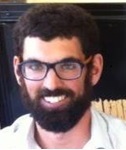
Nick kindly wrote about his experiences as a clinical secondee here in February last year which I’ve recapped below if you missed it first time round! He’s also since given us an exciting update on what he’s up to now. Check out his very interesting journey below:
“I was forwarded an advert for a clinical secondment with the Translational Research Exchange @ Exchange (TREE) in March 2017. The advert highlighted an opportunity for clinicians with an interest in developing skills in interdisciplinary research and with ideas for a project at the interface between quantitative disciplines (such as mathematics, physics or informatics) and clinical sciences.
At that time I was working as a diabetes and endocrinology academic clinical fellow with Andrew Hattersley’s team using genetic stratification to gain new insights into late onset type 1 diabetes (T1D). T1D can be misdiagnosed as type 2 diabetes (T2D) (there is a good explanation of the differences here). Correct classification of diabetes is important as insulin therapy is used in the management of T1D while diet and oral therapies are the mainstay of treatment for T2D.
For T1D, it is known that multiple genes contribute to the likelihood of having the condition (as well as being affected by environmental risk factors that we don’t currently understand very well). It is possible to capture this predisposition in a T1D risk score. Whilst the majority of individuals with raised risk will not develop T1D, a certain level of risk is required to develop the disease. Utilising this concept of absent genetic predisposition for T1D, it is possible at a population level (using data from the UK biobank) to stratify the different diabetes types. This novel approach showed that T1D, a disease thought to predominantly occur in childhood and adolescence, occurred almost as frequently above, as below, 30 years of age. This was a fascinating result and generated much interest.
Correct diagnosis in this age group is difficult as cases of T1D are drowned out by the sea of T2D cases occurring. This is highlighted by the case of our (then) prime minster, Theresa May, who aged 56 was initially diagnosed with T2D and when tablet therapies failed, the correct diagnosis of T1D was made and she was started on insulin.
Utilising polygenetic predisposition to stratify disease is a novel concept. With every new approach comes not only interesting results but steep learning curves. Our feeling was that not only could the approach be improved, but further fascinating insights could be gleaned. Whilst our group includes highly experienced clinicians and researchers in the field of diabetes we had far less experience with more advanced data analytics and modelling techniques. We felt alternative data approaches may help provide these answers and this formed the basis of my successful project and application to the secondment.
My aims for the secondment whilst fluid have been fundamentally threefold. 1) to learn new data processing skills including programming with python to improve our genetic stratification technique, 2) to gain insights into machine learning and potential applications for developing models to aid clinicians diagnose late onset type 1 diabetes and 3) to develop links between myself and my clinical team, with the TREE for this and future projects. My ultimate overall aim was to gain skills that would help me apply for a PhD fellowship to further my interest in understanding late onset type 1 diabetes and help improve clinical diagnosis.
Under the supervision of Prof Krasi Tsaneva-Atanasova and guided by the expertise of Dr Ben Evans I learnt new data handling skills and approaches to evaluating the large swathes of genetic and clinical data available to me. This has provided invaluable groundwork to moving forward in the future to help develop predictive modelling. Coupled to that and also working with the assistance of Piotr Slowinski and in collaboration with the clinical team, we have been developing improved approaches to stratify disease types based on genetic predisposition. This methodology is not just relevant to diabetes classification but has the potential to highlight misdiagnosis of a multitude of diseases with polygenetic predisposition.
In summary, I have had a fantastic experience based within the Living Systems Institute learning new skills and collaborations. I feel well placed moving forward to apply for a PhD. I would highly recommend the secondment and opportunities it gives to any clinicians interested in modelling or data analytics. It is a very steep learning curve but highly rewarding.”
Nick’s latest update – September 2019:
On the back of my secondment I have successfully applied for a PHD. This will be mainly focusing on better understanding how type 1 diabetes progresses when diagnosed later in life and if these patients can be recruited into clinical studies of type 1 diabetes. I will be exploring new and existing data using analytical skills acquired during my secondment to try and improve early diagnosis of type 1 diabetes in adults. Since the secondment I have returned to full time clinical work and in the last week have commenced my PHD.